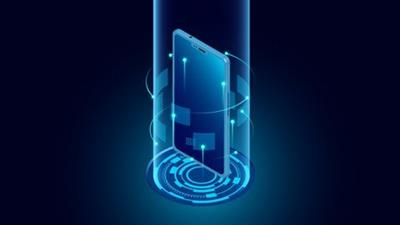O
0

Umts Fundamentals
Last updated 8/2020
MP4 | Video: h264, 1280x720 | Audio: AAC, 44.1 KHz
Language: English | Size: 1.09 GB | Duration: 2h 19m
UMTS Fundamental Concepts
Last updated 8/2020
MP4 | Video: h264, 1280x720 | Audio: AAC, 44.1 KHz
Language: English | Size: 1.09 GB | Duration: 2h 19m
UMTS Fundamental Concepts
What you'll learn
This course covers the basics of UMTS radio communication. The student will get in depth understanding of
UMTS Network Architecture
interfaces, Protocol stack
Air Interface and the UMTS Core Network
Requirements
No, Anyone who wants to gain knowledge and WCDMA understanding.
Description
This course covers the basics of UMTS radio communication. 3G (UMTS ) is Third Generation of Wireless telecommunication. It was released 3GPP Release 99 and is an upgrade to 2G & 2.5G. The student will get in depth understanding of :UMTS Network Architecture, interfaces, Protocols : the UMTS network architecture is partly based on existing 2G network components and some new 3G network components. It inherits the basic functional elements from the GSM architecture on the core network (CN) side.Key Features: provides services like high data transfer, seamless global roaming, WCDMA being used to cover both FDD and TDDUMTS Air interface: uses the concept of WCDMA ( Wideband Code division multiple access ), where multiple codes are used as resources for allocation to the UE. We will also look at the channelization tree, Power Control mechanism, Handover in UMTS We will also discuss UMTS Core Network - Similar to 2G (GSM & GPRS), UMTS core network is divided into Packet Switched and Circuit Switched networks. Multiple Functional Entities are introduced to support PS, CS and both.This course is designed for both students as well as working professionals who want to learn UMTS (3G) Technology. This will help you to learn about technology, concepts used in technology, network architecture, channels, power, frequency control, and more.
Overview
Section 1: UMTS Fundamental
Lecture 1 Course Preview
Lecture 2 Overview & Objectives
Lecture 3 What is UMTS?
Lecture 4 3G (Third-Generation)
Lecture 5 IMT 2000 Roadmap
Lecture 6 IMT 2000 Objectives
Lecture 7 Research and Proposal
Lecture 8 Standardization
Lecture 9 Harmonization (1999)
Lecture 10 World-wide Spectrum Allocation for IMT-2000
Lecture 11 European Frequency Allocations
Lecture 12 Network Services : An Introduction
Lecture 13 QoS Classification
Lecture 14 UMTS QoS Service Class
Lecture 15 QoS Parameters
Lecture 16 Information Transfer
Lecture 17 QoS Attributes
Lecture 18 QoS Differentiation
Section 2: UMTS Architecture
Lecture 19 Overview & Objectives
Lecture 20 User Equpment Domain
Lecture 21 Infrastructure Domain
Lecture 22 UMTS Architecture
Lecture 23 UMTS RAN Elements
Lecture 24 UMTS CN Elements
Lecture 25 UMTS CN Elements MSC and GMSC
Lecture 26 UMTS CN Elements PS Domain
Lecture 27 UTRAN
Lecture 28 RNC Roles : CRNC
Lecture 29 RNC Roles : SRNC
Lecture 30 RNC Roles : DRNC
Lecture 31 UMTS Release 4 Architecture
Lecture 32 Media Gateway
Lecture 33 Mobile Switching Centre Server
Lecture 34 WCDMA Interfaces
Section 3: WCDMA Basics
Lecture 35 Overview & Objectives
Lecture 36 Multiple Access
Lecture 37 UMTS Air Interface Technologies
Lecture 38 WCDMA Characteristics
Lecture 39 UMTS and GSM Network Planning
Lecture 40 Block Diagram of WCDMA System
Lecture 41 WCDMA Principle - Bits, Chips and Symbols
Lecture 42 Spreading and Despreading Signal
Lecture 43 Desired Signal and Other User Signal
Lecture 44 Signal Transmission and Reception
Lecture 45 CDMA - A Spread Spectrum Technique
Lecture 46 Channelization Code
Lecture 47 Processing Gain
Lecture 48 Scrambling
Lecture 49 Channelization Code Vs Scrambling Code
Lecture 50 Multipath Propagation
Lecture 51 Rake Receiver Architecture
Section 4: Radio Resource Management
Lecture 52 Overview & Objectives
Lecture 53 RRC Connection States
Lecture 54 Handover
Lecture 55 Power Control
Lecture 56 Admission Control
Lecture 57 Packet Scheduler
Lecture 58 Load Control
Section 5: HSPA Basics
Lecture 59 Overview & Objectives
Lecture 60 Release 99 (UMTS) Inefficiencies
Lecture 61 Applications Benefiting from HSPA
Lecture 62 HSPA Evolution
Lecture 63 HSPA Architectural Evolution
Lecture 64 HSDPA Basic Principles
Lecture 65 Shared Channel Transmission
Lecture 66 Multi-Code Operation
Lecture 67 Dynamic Power Allocation
Lecture 68 Fast Hybrid Automatic Repeat Request
Lecture 69 Power Control and Link Adaptation
Lecture 70 Adaptation Modulation and Coding (AMC)
Lecture 71 Overview of HSUPA
Lecture 72 HSUPA : Comparison with HSDPA
Lecture 73 HSUPA Scheduling
RF Engineers, Drive Test Engineers, Any one who wants to gain knowledge in 3G Technology,This course is for students as well as working professionals who want to learn fundamentals of UMTS.
rapidgator.net:
You must reply in thread to view hidden text.
uploadgig.com:
You must reply in thread to view hidden text.
nitroflare.com:
You must reply in thread to view hidden text.

